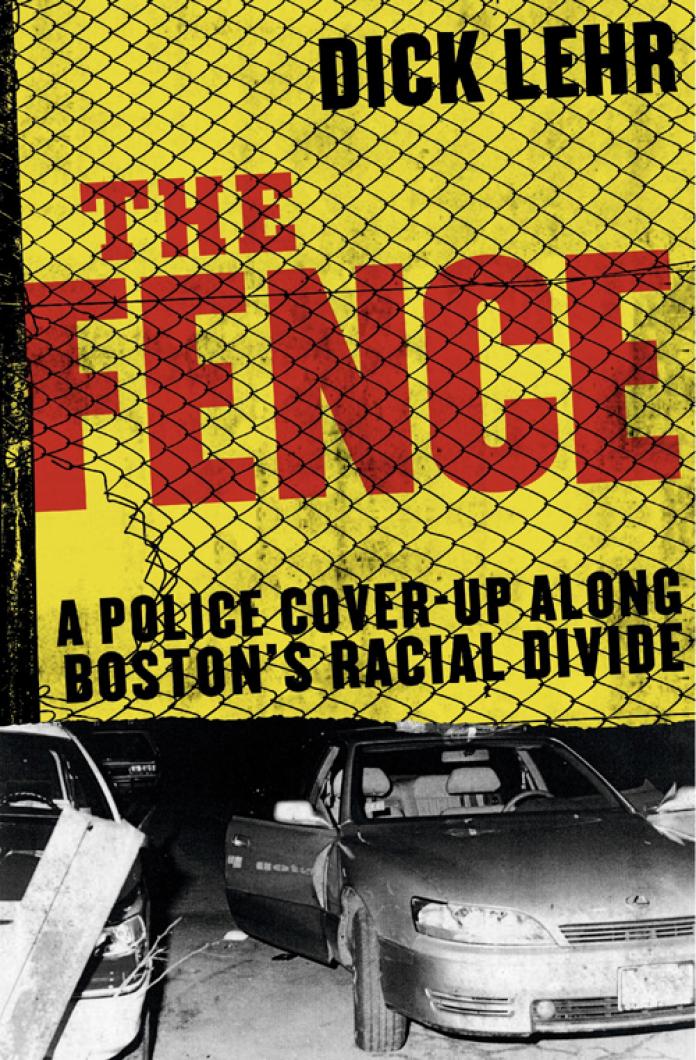THE FENCE: A Police Cover-up Along Boston’s Racial Divide. By Dick Lehr. Harper, June, 2009. 400 pages. $25.99.
A key element of the true crime story, The Fence: A Police Cover-Up Along Boston’s Racial Divide, by Dick Lehr (Harper, $25.99) is the distinction between undercover and plainclothes work. An undercover officer goes full out in his garb, speech and lifestyle to convince gang members to induct him into their crime syndicate. A plainclothes cop’s mandate is to wear no uniform on the job and to drive an unmarked car, meaning a police vehicle without the blue bubble on the roof and other identifying marks.
Most criminals can recognize a plainclothes officer within a couple of seconds of conversation. The advantage to the officer lies in the few moments of nonrecognition when a felony goes down without a hint of a cop around.
Boston police officer Michael Cox, 29 years old, had grown up in Roxbury, and although he was black, had attended mostly white private schools. On the night when the crime in question went down, Jan. 25, 1995, he lived in Dorchester with his young doctor wife, Kimberly, and two young sons. He and his partner, Craig Jones, were members of the department’s elite Anti-Gang Violence Unit, “a collection of 40 cops who roamed the meanest streets of the city in pursuit of street gangs, drugs and guns.” On that particular night, they got a call for Tango K-8 (tango = drug unit, K = plainclothes, 8 = Cox and Jones) to check out Hip Hop Night at a club called Cortees in a tough area of Dorchester. Informants had relayed information about trouble brewing.
Somewhere along the line that night a man was murdered, and four local hoods piled into a gold Lexus whereupon a number of officers, both uniformed and plainclothes, gave chase. As Mr. Lehr describes the real time man hunt, in grotty detail after grotty detail, the reader comes to realize that a car chase so massive has perhaps never been reproduced even in the most FX-laden of cop movies: “The number of police vehicles kept increasing — ranging from 20 to 40 . . . during one stretch, Dave Williams [one of the chasers] marveled at the scene: ‘You could look back in your mirror and all you can see is just a sea of blue.’”
The crunch came when the Lexus was halted, with police cars slamming around it. A particular perp, Smut Brown, whom we’ve come to know in Mr. Lehr’s thorough multiple biographies, takes off on foot, launching himself over a chain-link fence. A white officer named Kenny Conley, a native of South Boston, took off after him, along with some other officers, including Michael Cox, clad, of course, in his plainclothes jeans, windbreaker and hoodie. Before he could climb the fence, however, he was pulled back by other hands and beaten to a pulp.
On earlier occasions Officer Cox had intercepted a blow by a misguided fellow police officer, but an apology had always followed, and the black officer accepted the mistake with equanimity. In this event, however, as he lay in a hospital bed with a hematoma the size of an egg, a swollen face and multiple lacerations, abrasions and internal bleeding, no apology was forthcoming. The official word was that Officer Cox slipped on the ice. Police witnesses who might have come forward chose the code of omerta, known in police circles as the blue wall of silence.
In addition to this miscarriage of justice against the brutally beaten African American officer, the department accused Officer Conley, who himself chased the murder suspect, of lying when he denied witnessing the beating. What follows in Mr. Lehr’s book is a detailed and riveting account of Officer Cox’s crusade for justice in his civil rights lawsuit against the Boston Police Department.
Author Dick Lehr, Vineyard summer resident, is a professor of journalism at Boston University and for nearly 20 years pounded the turf as an investigative reporter for the Boston Globe. He covered the Michael Cox story in many articles but justifiably determined a full-length book was needed to describe the events in their full, grisly glory. He was right.
A single motif stands in relief in the midst of this story: Although we’ve made ground-breaking strides in our election of an African American president, and the race riots in South Boston of the 1970s seem as long ago as any other drama of the distant past, we still have a long way to go in our society’s quest for equality when white policemen are allowed to decant their buried or not-so-buried hostility by beating the bejesus out of criminals (and in this case the brutality was shown to be even more horrific as an officer is mistaken for a perpetrator). Whoever is the victim, whether a Rodney King or a Michael Cox, the true enemy is racism.







Comments
Comment policy »